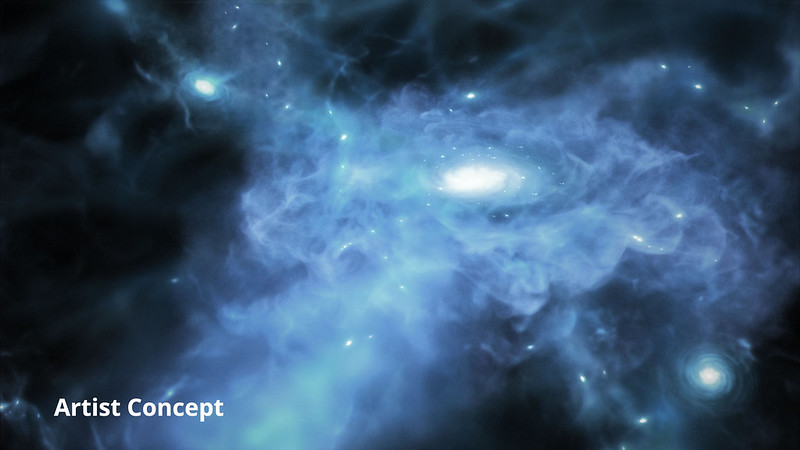When I used to do experiments, I would get to a point where I was close to proving a hypothesis, only to discover some “random” data points. After further testing, it became clear that they were not random and just highlighted what I didn’t know that I didn’t know.
Recently NOVA presented an episode on the cosmos, and it appears that despite the important discoveries in the last 50 years, most of these years have been about discovering that they didn’t know what they didn’t know.
In particular, dark matter and dark energy. (A joke among astrophysicists, cosmologists, and astronomers is that it is labeled “dark” because they know so little about it.)
And it is important because it is estimated that dark energy and dark matter make up 95% of the universe. That’s right, we have been observing and interacting with only 5% of the total universe.
Dark matter is matter that we cannot yet detect, but makes up most of the mass of galaxies and galaxy clusters. It was discovered by several scientists, among them a woman, Vera Rubin, who, being a woman was not even allowed in many observatories in the 1960s to gather data.
Dark energy is the name that is given to a mysterious influence that is accelerating the expansion of the universe. Before these concepts were identified we considered space a huge void, in fact it is dark matter (27% of the universe) and dark energy (68% of the universe).
Dark matter is important because it keeps the galaxies together. If not for dark matter, the stars would spin out of the galaxy. Dark energy on the other hand, is separating galaxies, therefore expanding them. The two are required for balancing the contraction and the expansion of galaxies.
Dark matter works like a kind of cosmic dike that holds our universe together. Our own Milky Way is embedded in a massive cloud of dark matter. So far, dark matter has been extremely difficult to detect via inferential mathematical equations and observations. Dark matter only appears to interact with visible matter through gravity.
Scientists are trying to “discover” dark matter at the Sanford Underground Research Facility (SURF) in Lead, South Dakota. It is the deepest underground laboratory in the United States at 4,850 feet, and among the deepest in the world. Scientists will be trying to detect dark matter using liquid xenon gas. Some scientists believe that dark matter interacts with normal matter via a mechanism that we don’t yet know—a so-called “dark force,” or fifth force in the universe.
Others postulate that dark matter does interact with more of the known forces than just gravity, but does so at such a tiny interaction strength that it is currently undetectable. For now, dark matter doesn’t fit hypotheses of how the universe works, in particular the standard model of particle physics.
Dark energy is a repulsive force like a repelling magnet that drives the universe’s accelerating expansion. Scientists know even less about dark energy, which is the far more dominant force. Dark energy is likened by some to the energy of a vacuum. Dark energy was used to explain the discovery that the universe isn’t just expanding — it is speeding up.
Even though scientists don’t know what dark energy is, they can explain it with Einstein’s theory of general relativity. Einstein originally proposed the Cosmological Constant (in what he called his biggest blunder) in his general theory of relativity. This constant was to prevent the universe from collapsing due to gravity. Rather than being a blunder, this constant is now likened to dark energy and allows “empty/invisible” space to have energy.
Are dark matter and dark energy present on our earth? Do we interact with them every day? I can’t see why not…but I have always believed that we are constrained by our senses and our ability to measure.
But, one thing is certain, accepting that we don’t know what we don’t know keeps us open to learning.



Write a Letter to the Editor on this Article
We encourage readers to offer their point of view on this article by submitting the following form. Editing is sometimes necessary and is done at the discretion of the editorial staff.